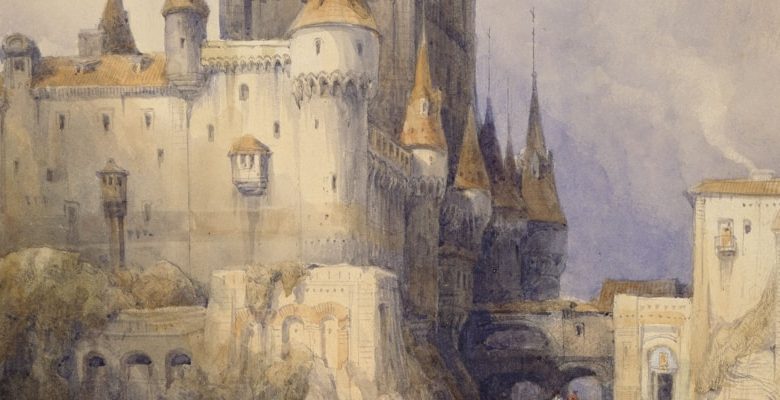How NFTs Are Changing the Art and Entertainment Industries

- Exploring the rise of NFTs in the art world
- The impact of NFTs on traditional art market practices
- NFTs revolutionizing the way artists interact with collectors
- The intersection of blockchain technology and creative expression
- NFTs as a new avenue for artists to monetize their work
- Challenges and opportunities for artists and creators in the NFT space
Exploring the rise of NFTs in the art world
The rise of NFTs in the art world has been a significant development that has captured the attention of artists, collectors, and enthusiasts alike. NFTs, or non-fungible tokens, have revolutionized the way digital art is bought, sold, and collected. This innovative technology allows artists to create unique digital assets that can be tokenized and authenticated on the blockchain, ensuring ownership and provenance.
NFTs have opened up a new world of possibilities for artists, allowing them to reach a global audience and monetize their work in ways that were previously impossible. By tokenizing their art, artists can create scarcity and exclusivity, making their pieces more valuable to collectors. This has led to a surge in interest in digital art and a reimagining of what it means to own and collect art in the digital age.
Collectors are also embracing NFTs as a new way to invest in and support artists. By purchasing NFTs, collectors can directly support their favorite artists and own a piece of digital art that is unique and verifiable. This direct relationship between artist and collector is changing the dynamics of the art market, allowing for more transparency and democratization.
The art world is still grappling with the implications of NFTs, but one thing is clear – they are here to stay. As more artists and collectors embrace this technology, we can expect to see even more innovation and creativity in the digital art space. NFTs are changing the way we think about art and its value, opening up new possibilities for artists and collectors alike.
The impact of NFTs on traditional art market practices
The emergence of NFTs has brought significant changes to traditional art market practices. These digital tokens have revolutionized the way artists create, sell, and authenticate their work. One of the key impacts of NFTs on the traditional art market is the disintermediation of the art world. By using blockchain technology, artists can now directly connect with collectors and buyers without the need for galleries or auction houses.
Furthermore, NFTs have introduced a new level of transparency and security to the art market. Through the use of blockchain, each NFT is uniquely identified and verified, providing a secure way to track ownership and provenance. This has the potential to reduce issues of art forgery and fraud that have plagued the traditional art market for centuries.
Additionally, the introduction of NFTs has expanded the reach of artists beyond geographical boundaries. With digital tokens, artists can now sell their work globally, reaching a wider audience and potentially increasing their sales and exposure. This has democratized the art market, allowing emerging artists to gain recognition and success without the need for traditional gatekeepers.
NFTs revolutionizing the way artists interact with collectors
NFTs have completely transformed the way artists engage with their audience and collectors. Through the use of blockchain technology, artists can now create unique digital assets that are verifiable and cannot be duplicated. This has opened up a whole new world of possibilities for artists to monetize their work in ways that were previously impossible.
One of the key benefits of NFTs for artists is the ability to sell their work directly to collectors without the need for intermediaries. This means that artists can retain more control over their creations and earn a higher percentage of the sale price. Additionally, NFTs allow artists to establish a direct connection with their fans, creating a more intimate and interactive relationship.
Furthermore, NFTs have enabled artists to explore new ways of creating and distributing their work. With the ability to tokenize digital assets, artists can now experiment with different formats and styles, pushing the boundaries of traditional art forms. This has led to a renaissance in the art world, with artists from all backgrounds embracing this new technology to showcase their creativity.
The intersection of blockchain technology and creative expression
Blockchain technology has significantly impacted the art and entertainment industries, revolutionizing the way creative expression is bought, sold, and shared. The intersection of blockchain technology and creative expression has given rise to a new era of digital ownership and authenticity.
Through the use of Non-Fungible Tokens (NFTs), artists and creators can tokenize their work, creating a unique digital asset that is secured on the blockchain. This has opened up new opportunities for artists to monetize their creations and connect directly with their audience.
By leveraging blockchain technology, artists can establish provenance and authenticity for their work, ensuring that each piece is one-of-a-kind and cannot be replicated or forged. This has led to a renewed interest in digital art and collectibles, with NFTs becoming a sought-after commodity in the art world.
Furthermore, the use of smart contracts on the blockchain allows for artists to receive royalties whenever their work is resold, providing them with a sustainable source of income. This has empowered artists to take control of their careers and build a loyal following of collectors.
In conclusion, the intersection of blockchain technology and creative expression has paved the way for a more transparent, secure, and accessible art market. As NFTs continue to gain popularity, the art and entertainment industries are experiencing a paradigm shift that is reshaping the way we perceive and interact with digital art and media.
NFTs as a new avenue for artists to monetize their work
NFTs have emerged as a novel way for artists to capitalize on their creations in the digital age. This innovative technology allows artists to tokenize their artwork and sell it as a unique digital asset on blockchain platforms. By leveraging NFTs, artists can reach a broader audience and monetize their work directly, without the need for intermediaries like galleries or agents.
One of the key advantages of NFTs for artists is the ability to retain ownership and control over their creations. Unlike traditional art sales where artists often lose control of their work once it is sold, NFTs enable artists to set the terms of sale and earn royalties on secondary market transactions. This gives artists a new level of autonomy and financial independence in the art world.
Furthermore, NFTs provide artists with a way to engage directly with their fans and collectors. By selling limited edition digital assets, artists can create a sense of exclusivity and scarcity around their work, driving up demand and prices. This direct connection with buyers also allows artists to receive immediate feedback and support from their audience, fostering a more intimate and interactive relationship.
Challenges and opportunities for artists and creators in the NFT space
Artists and creators entering the NFT space are faced with both challenges and opportunities. On one hand, the decentralized nature of NFTs allows artists to directly connect with their audience and bypass traditional gatekeepers in the art and entertainment industries. This opens up a whole new world of possibilities for artists to monetize their work and gain recognition.
However, with this new frontier comes challenges as well. One of the main hurdles for artists in the NFT space is the issue of copyright and intellectual property protection. Since NFTs are based on blockchain technology, it can be difficult to prove ownership and prevent unauthorized use of digital assets. This is a critical concern for artists who rely on copyright laws to protect their creations.
Another challenge for artists in the NFT space is the environmental impact of blockchain technology. The energy-intensive process of minting and trading NFTs has raised concerns about the carbon footprint of digital art. Artists need to consider these environmental implications when creating and selling NFTs to ensure they are not contributing to climate change.



